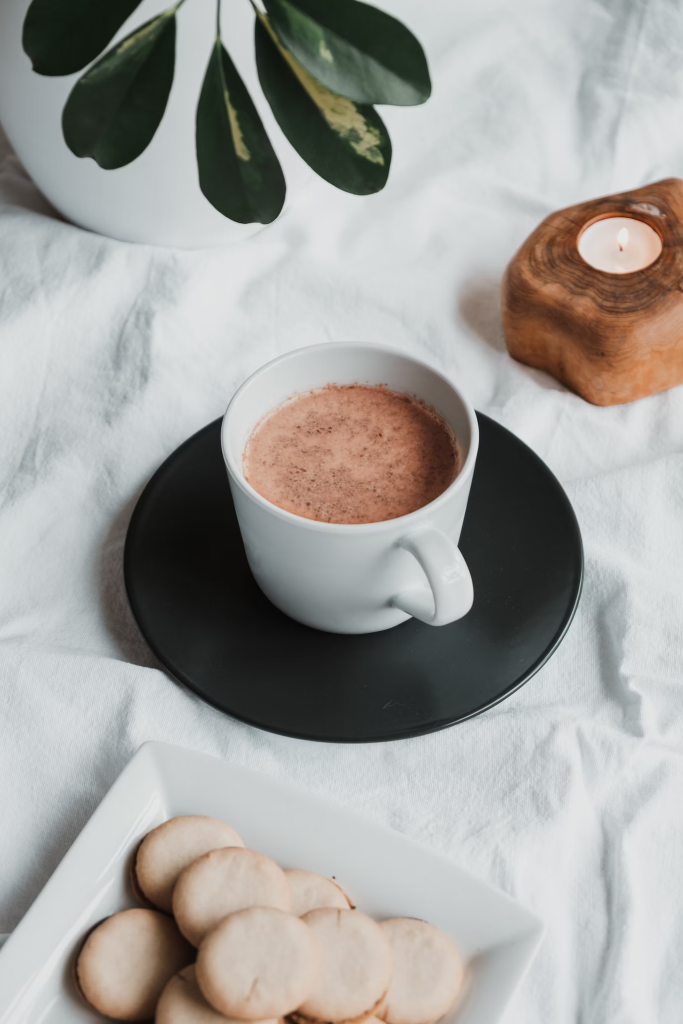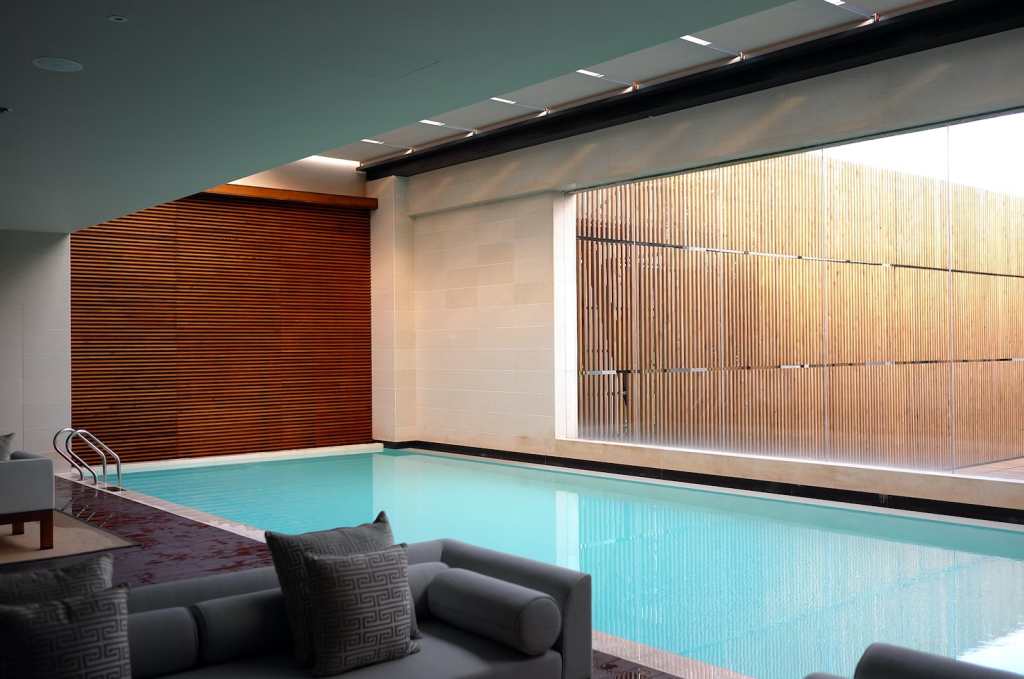In recent years, cacao powder has gained popularity not only for its rich, indulgent flavour but also for its potential health benefits. As people seek out alternatives to traditional beverages, cacao powder has emerged as a versatile ingredient in various drinks.

But the question lingers: Is it okay to drink cacao powder every day? In this article, we’ll explore the nutritional profile of cacao, its potential health benefits, and considerations for incorporating it into your daily routine.
Understanding Cacao Powder:
Cacao powder is derived from the seeds of Theobroma cacao, the cacao tree. These seeds, commonly known as cacao beans, are processed to extract the fat, leaving behind a dry, richly flavoured powder.
Unlike cocoa powder, which undergoes additional processing and may contain added sugar and fat, pure cacao powder retains more of its natural compounds.
Nutritional Profile:
Cacao powder is a nutritional powerhouse, containing a variety of essential nutrients. One of its most notable components is flavonoids, which are antioxidants that may contribute to cardiovascular health by improving blood flow and reducing inflammation.
Additionally, cacao is a good source of minerals such as magnesium, iron, and potassium, as well as vitamins like B1, B2, B3, B5, and B9.
Health Benefits:
- Rich in Antioxidants:
Cacao powder is renowned for its high antioxidant content, which helps combat oxidative stress in the body. Antioxidants play a crucial role in neutralizing free radicals, potentially lowering the risk of chronic diseases.
- Heart Health:
Flavonoids present in cacao may have positive effects on heart health. Studies suggest that regular consumption of flavonoid-rich foods may contribute to improved blood vessel function and reduced blood pressure.
- Mood Enhancement:
Cacao contains compounds that can positively impact mood and mental well-being. It contains theobromine, a natural stimulant, and anandamide, often referred to as the “bliss molecule.” These compounds may contribute to feelings of relaxation and happiness.
- Brain Function:
The flavonoids in cacao may also have cognitive benefits. Some research indicates that regular consumption may help enhance memory and cognitive function, though more studies are needed to establish conclusive evidence.
Considerations for Daily Consumption:
- Caloric Content:
While cacao powder is nutrient-dense, it’s essential to be mindful of its caloric content. Excessive consumption may contribute to an increased calorie intake, potentially leading to weight gain if not balanced with a healthy diet and exercise.
- Caffeine and Theobromine:
Cacao naturally contains caffeine and theobromine, both stimulants. While the amounts are generally lower than coffee, individuals sensitive to caffeine should be cautious, especially if consuming cacao in the evening.
- Quality Matters:
The quality of cacao powder can vary. Opt for high-quality, organic cacao to ensure that you’re getting the maximum nutritional benefits without additives or contaminants.
- Added Ingredients:
Some commercial cacao powders may include added sugars, fats, or artificial ingredients. Read labels carefully and choose products with minimal additives for a healthier option.
Should I Drink Cacao In The Morning Or Night?
The timing of consuming cacao can depend on your personal preferences, lifestyle, and how your body responds to certain compounds found in cacao, such as caffeine and theobromine.
Here are some considerations for deciding whether to drink cacao in the morning or at night:
Drinking Cacao in the Morning:
1. Natural Energy Boost:
Cacao contains natural stimulants like caffeine and theobromine. Consuming cacao in the morning can provide a gentle energy boost, helping you kickstart your day with increased alertness and focus.
2. Mood Enhancement:
The compounds in cacao, such as theobromine, can contribute to feelings of relaxation and happiness. Starting your day with a cacao-infused beverage may positively impact your mood and set a positive tone for the day.
3. Nutrient Intake:
Including cacao in your morning routine allows you to benefit from its nutrient content early in the day. Cacao is rich in antioxidants, minerals, and vitamins, which can contribute to overall health and well-being.
4. Pairing with Breakfast:
Cacao can be a flavorful addition to breakfast options, such as smoothies, oatmeal, or yogurt. It adds a rich taste while providing nutritional benefits to your morning meal.
Drinking Cacao at Night:
1. Relaxation and Stress Reduction:
The theobromine in cacao has relaxing properties, potentially aiding in stress reduction. Consuming cacao in the evening may contribute to winding down and promoting a sense of calm.
2. Warm and Comforting:
Hot cacao beverages can be warm and comforting, making them a soothing option before bedtime. This ritual may help signal to your body that it’s time to relax and prepare for sleep.
3. No Disruption to Sleep:
While cacao does contain stimulants, the amounts are generally lower than in coffee. For some individuals, drinking cacao in the evening may not interfere with sleep. However, personal sensitivity to caffeine varies, so it’s essential to pay attention to how your body reacts.
4. Dessert Alternative:
If you have a sweet tooth in the evening, a cacao-based treat can be a healthier alternative to sugary desserts. Choose a low-sugar or unsweetened cacao option to keep your evening snack nutritious.
General Tips:
- Personal Sensitivity:
Pay attention to how your body responds to cacao, especially if you are sensitive to caffeine. If you find that it affects your sleep, consider limiting your intake in the evening.
- Quality Matters:
Choose high-quality cacao powder with minimal processing and additives to maximize its health benefits.
- Balanced Diet:
Whether you choose morning or night, ensure that your overall diet is well-balanced and includes a variety of nutrient-rich foods.
There is no one-size-fits-all answer to whether you should drink cacao in the morning or at night. Consider your individual preferences, daily schedule, and how your body reacts to caffeine, and choose a time that aligns with your overall wellness goals.
Conclusion:
In moderation, drinking cacao powder every day can be part of a balanced and healthy lifestyle. Its rich nutritional profile, coupled with potential health benefits, makes it an attractive choice for those seeking an alternative to traditional beverages.
However, like any food or drink, it’s crucial to consume cacao in moderation and be mindful of added ingredients.
Before making significant changes to your diet, especially if you have existing health conditions, it’s advisable to consult with a healthcare professional for personalized advice.
As you embark on your cacao journey, savour the rich flavours and potential health benefits, all while maintaining a mindful approach to your overall well-being. After all, a daily indulgence can indeed be a source of pleasure and health if enjoyed responsibly.
Interested in getting cacao powder? You might want to check ceremonial cacao at Sacred Taste.









